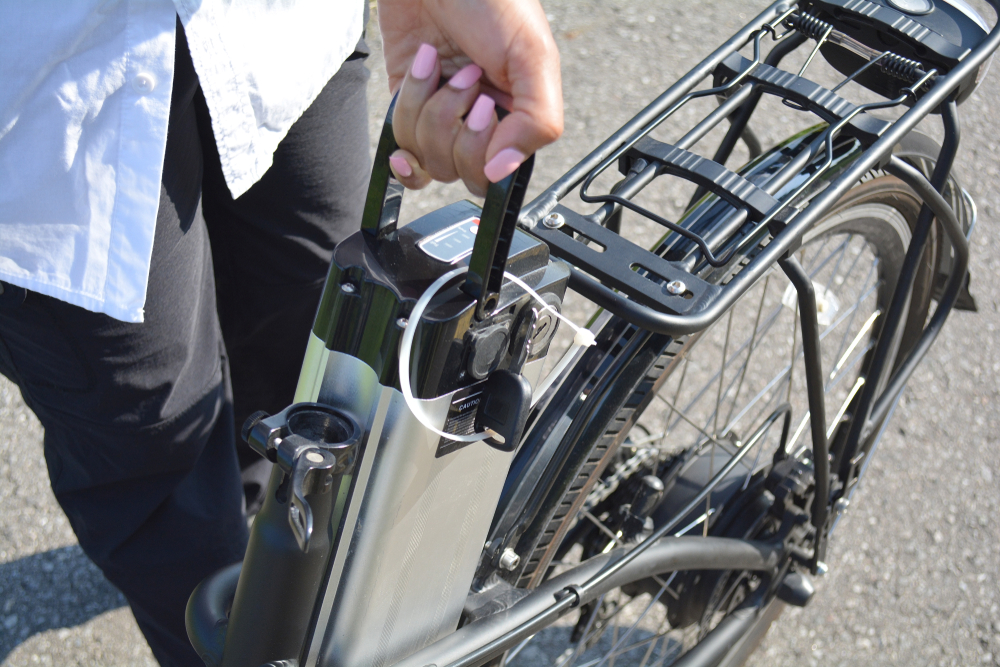What are Electric Bikes?
Electric bikes, also known as e-bikes or power bikes, combine the benefits of a conventional bike with the power and efficiency of technology. With the help of rechargeable lithium-ion batteries, the e-bike allows riders to reach high speeds with ease. E-bikes offer an alternative to motorcycles and cars and are an exciting and faster form of transportation than a conventional bicycle.
There are several advantages of owning an electric bike. In addition to higher speed and less effort, your bike protects the environment and promotes wellness.
The main difference between an electric bike and a standard one is that you need to recharge your e-bike’s battery. The idea of recharging a battery might deter you at first, but new technology allows them to last longer on a single charge. Additionally, electronic bikes are more accessible to buy than cars or motorbikes because they don’t need licence plates or registration.
If you’ve seen an e-bike in action and are thinking about buying one, you’re not alone. More people in the US have chosen to purchase electronic bikes for their ease of use and their other benefits. If you’re still on the fence, read on to see the advantages of owning an electric bike.
How many miles can you get on an electric bike?
Depending on the brand and pedal-assist features you use while biking, you can get travel 18-50 miles on a regular electric bike. In North America, e-bikes do not have the same level of sophistication as those in other regions across the world. High-quality electric bikes can last up to 240 miles with one charge, but this depends on the lithium batteries’ strength.
Nowadays, you can shop online for e-bikes, and you’ll find their qualifications online. You can also check customer reviews to get others riders’ opinions regarding a bike’s mileage capacity before you buy.
Advantages of Owning an Electric Bike
1. Energy Efficient
One of the advantages of owning an electric bike is its energy efficiency. Since they run on lithium-ion batteries, you can feel good about using them without polluting the environment.
If you own a car and rely on it for all your transportation needs, you use more gas. Additionally, those short trips add to your car’s mileage in the long run.
When you switch to an electric bike for short or non-essential transportation needs, you’ll cut energy costs. Since they rely on battery power, your energy consumption decreases with time. Switching to an electric bike helps you do your part to reduce energy emissions.
2. Promote Health
E-bikes promote physical and psychological wellness, no matter where you live. They are easy to use in urban and rural areas and don’t take up much storage space. You still get a workout without muscle fatigue, which makes them ideal for people recovering from accidents.
Your device still needs manoeuvring and takes some effort to handle depending on your use of battery life. Your e-bike will also encourage you to get out and explore more. You can take them with you on road trips and use them to discover new places and roads.
3. Pedal Assist
Pedal-assist is one of the main differences between an electric and conventional bike. Pedal-assist while driving gives you a propulsion boost through battery power. People who have difficulty using bikes on inclines will get an extra power surge with e-bikes, helping them overcome steep bike paths.
In addition to the assist, some electric bikes have a throttle system that allows propulsion without pedaling. If you don’t intend to exercise on your trip, you can relax and enjoy the scenery without breaking a sweat.
4. Perfect for Seniors
Seniors often experience joint pain, which discourages them from exercising. E-bikes help take the edge off joint and muscle pain and are perfect for seniors with moderate mobility. In the past, seniors had to use static pedals to strengthen their muscle mass.
Static pedal devices don’t give people a chance to get out of the house, and exercising with them becomes boring. E-bikes motivate seniors to get out more, which boosts their physical and mental health.
The lightweight battery on an e-bike also doesn’t interfere with balance. Seniors can easily move, manoeuvre, and operate their e-bikes without help which is one of the advantages of owning an electric bike.
5. Decrease in Transportation Costs
An electric bike cuts transportation costs on several fronts. After your initial purchase, you won’t have to worry about bus and train fares any longer. Since you save on gas, you’ll notice that your overall transportation expenses decrease with time, especially if you rely on your car for all transportation needs.
An electric bike doesn’t need registration or a license to ride it. You can even avoid parking fees, which every driver worries about from time to time. Although they will not replace a motor just yet, nowadays, the standard battery is more powerful and long-lasting than ever before.

6. Variety of Models
E-bikes come in a variety of builds, styles, colours, and models. Depending on your experience and how heavily you intend to use it, you’ll find one right for you.
In addition to the different styles, the functions and parts of electric bikes can differ. Before you make a purchase, determine your budget and how you’ll use your electric bike.
You’ll generally see two categories of electric bicycles: hub motors and mid-drive motors. You can find hub motors at the front or back of the bike’s wheel. They are usually heavier and bulkier than other models. Mid-drive motors are simple enough to place on or near the gears of your electric bike.
7. Simple to Use
Besides the addition of a battery, electric bikes are regular bicycles with an added power boost. They are user-friendly, from charging the battery to storage and maintenance.
You don’t have to learn how to use them if you know how to ride a bike. The action of pedalling engages the electric motor, and some allow you to move without pedalling at all.
When you don’t have to worry about pedalling back home, you can enjoy your ride. For example, you can drive to your destination and use the pedal-assist and motor to propel you back home.
8. Reduce Air Pollution
From the global push to sustainability to the shift towards clean energy, the e-bike has become part of the green movement. Your e-bike offers an alternative to motorcycles and scooters, and it won’t emit harmful pollutants. Electric bikes are available around the world due to their pollution-decreasing potential; one of the main advantages of owning an electric bike.
9. Avoiding Traffic
Nobody likes to get stuck in traffic, especially when in a rush. Since electric bikes are relatively small, they help you avoid traffic and gridlocks. Additionally, you can save plenty of time on your commute if you opt for an e-bike.
You can use the bike lane, which means you don’t have to expose yourself to other cars. Avoiding traffic decreases your chances of getting into an accident, and you can operate your bike safely wherever you are.
Disadvantages of Electric Bikes
As with any vehicle, the e-bike does have a series of disadvantages. Although some are not significant inconveniences, knowing what to expect helps you make the most of your purchase.
The biggest issue that you’ll face is the consistent need to recharge your bike, which may be burdensome in the beginning. However, once you become a habitual rider, you won’t consider it an inconvenience to charge your bike.
1. Higher Cost
Since an e-bike has a higher degree of technological sophistication than conventional bikes, it costs more. The average e-bike contains batteries and a charging equipment, and the quality of the materials makes a difference in the cost.
Until this technology becomes more accessible in the future, buying an e-bike is an investment. However, it will pay off in the long run.
The longer your e-bike’s battery lasts, the higher the bike’s price tag. A standard e-bike can cost up to $1,000, while models with a higher degree of sophistication and more powerful batteries can cost as much as $3,000.
Despite the hefty initial price tag, if you consider how much gas you will save down the line, the cost balances itself out. When you factor in how much switching to e-biking affects the environment, that positive impact is priceless.
2. Battery Life
Although today’s batteries are more durable and last longer, e-bike batteries need replacement after a specific number of charges. Cycles that run on a lithium battery last up to 1,000 charges. Those made from other materials last up to 500 charging cycles.
Although they are not too expensive, they present a minor obstacle for cyclists. Until batteries that do not need replacement become available, your battery may need changing two or three times over the lifetime of the bike.
When you decide to make a purchase, try to choose a lithium battery instead of a cheaper alternative. They have the longest lifespans and will need fewer replacements over time.

3. Mileage and Speed Limitations
If you want an electric bike that completely replaces a motorcycle or scooter, e-bikes can’t do that. Even the highest quality e-bike cannot match the speed and mileage that a motorbike provides. Although this may become a possibility in the future, an e-bike cannot go the same distances without charging, and they won’t go above 28 mph.
In the US, e-bikes are also regulated by the federal government. Your electric bike cannot go above 20 mph with pedal assistance, and it must have fully-functioning pedals in case of an emergency.
Despite these frustrating limitations, these bikes can become stronger in the future. Maintaining safe speed limits on these devices helps keep riders and passersby safe.
4. Long Charge Time
One of the disadvantages of cycling with an electronic bike is that it takes time to charge the battery fully. You can’t avoid the inconvenience of charging, especially if you rely heavily on the bike to get around. Leaving the electric bike to charge overnight is the best option, but it may still need charging during the day after heavy use.
The total time it takes for your electric bike to charge mainly depends on the size of its battery. Usually, you can expect to wait 3-6 hours before you can use it again. When you first purchase your electric bike, make sure you charge it for a full 10 hours, similar to how you would do with a new smartphone.
5. Weight Variations
Not all e-bikes weigh the same, and you should test yours out before you make a purchase. Depending on the weight of the people who will use the bike, it may be too bulky or heavy. Although the e-bike gets lighter every year, the battery and mechanisms that attach to yours could be cumbersome during a ride.
If your battery power runs out while cycling, you will have to push a more substantial bicycle. Before you make your purchase, take the time to test the weight of more than one standard bike. Once you know the limits of what you can maneuver, it will be easier to choose an electric bike that works for you.
Is it worth getting an electric bike?
After reading about the advantages and disadvantages of electric bicycle riding, you can determine if it’s worth getting one for your personal use. The pros far outweigh the cons, especially when you consider environmental impact and its ability to decrease transportation costs over time.
More people are opting to purchase electric bikes because they make life easier and the average ride becomes more enjoyable. You can feel good about using them and benefiting from the power of technology. The decision ultimately lies in how much you plan to use your bike and if it can change your quality of life.
Although they do come with some drawbacks, electronic bicycles are worth the investment and are suitable for most ages, locations, and lifestyles. If you want to cut costs, enjoy your biking experience, and decrease your carbon footprint, these bicycles are your best bet.





